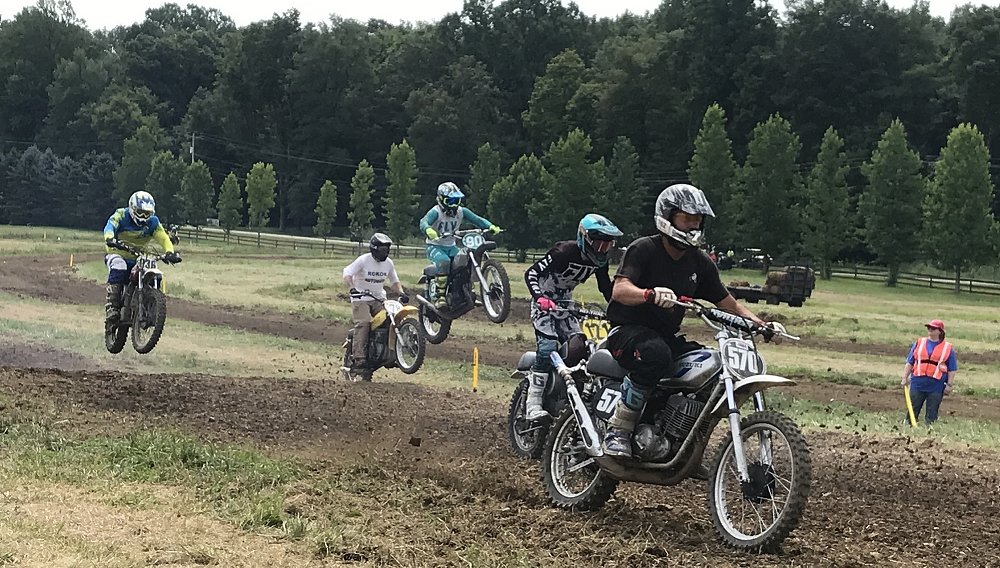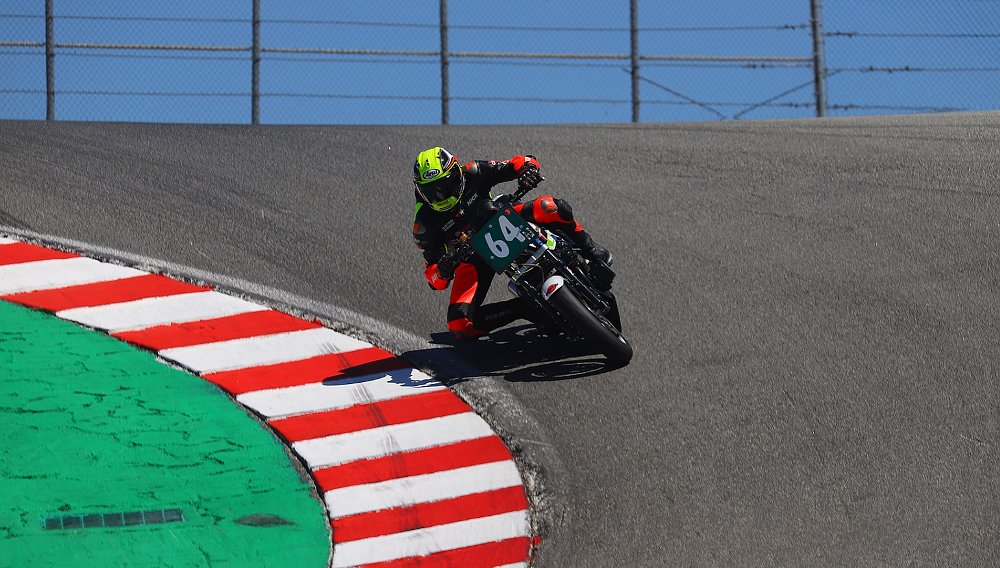At my age (26), all the bikes I've ever owned, or even ridden, have been at least a decade or two my senior. Explaining my preference towards classic machinery is not straightforward, and a viewpoint that is constantly evolving. What draws me to older bikes? Why do I voluntarily miss out on years of advancement?
Now more than ever, with the advent of buying and selling platforms (Craigslist, Facebook Marketplace, Cycle Trader, etc.), a prospective motorcyclist has the world at their fingertips when it comes to bike selection. Even given all that selection, I've always been attracted to and invested in vintage motorcycles. My dad has been an enthusiast for many years, and he cultivated my appreciation for the UJMs (universal Japanese motorcycles) of the 1970s and '80s. For better or worse, the classics have been where I've cut my teeth in motorcycling.
As I've become more involved in the hobby, the ups and downs of retro machinery have revealed themselves. Several consistent themes have defined my experience so far and they help explain why I keep riding motorcycles that are older than I am.
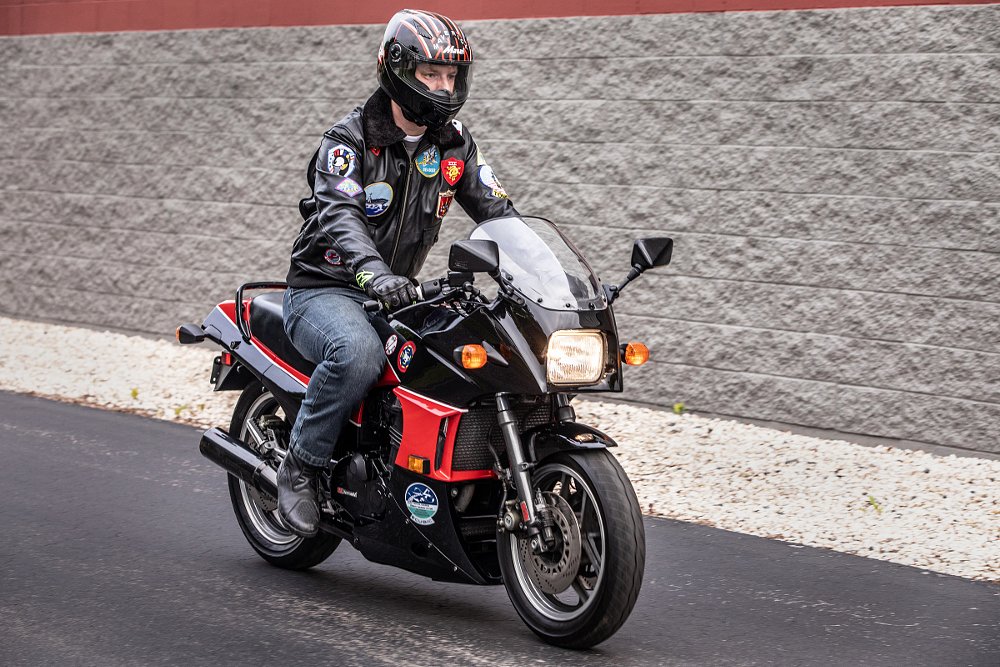
I have a greater connection to older motorcycles
“I could never ride something old and unreliable.”
This is often the response when someone hears that my ride is 20+ years young. The statement has some merit, but it makes a critical presupposition, that "old" and "unreliable" always go hand-in-hand. Often, many assume that vintage machines are ticking time bombs of never-ending maintenance, that carburetors and black magic are synonymous, and the rider has to budget twice as much wrench time as road time. Why mess around with the headache of an old bike when a new one functions exactly as it's supposed to with much less upkeep?
From my perspective, the truth is somewhere between these extremes. Bikes of all ages prefer to be ridden; the wear and tear of regular use often requires much less maintenance than the negligence that comes from infrequent, scattered, and short rides. A new motorcycle may need less upkeep if you ride a few times per season, but for someone looking to put on 5,000 to 10,000 miles per season, vintage motorcycles can be fairly hassle-free.
The major difference is often in the initial investment. Many used bikes are being sold because they haven't been given adequate attention, and so while the asking price may be more approachable, they'll have some early maintenance costs to get road- and trustworthy (think carburetor cleanings, brake rebuilds, tire replacements, etc.). But the way I see it, buying a recreational product that functions better the more I use it feels the same as buying a good book; I’m investing in a classic story, and in the time to enjoy it.
This investment leads to a connectedness to the machine, more of a symbiotic relationship. Not every owner is willing to embrace that investment, and there's also an argument to be made, especially for novice riders, for modern safety features like ABS and traction control. But for the right individual, that connection may be a large part of the overall appeal. A vintage machine needs to be listened to, its needs anticipated, and operated in a way that caters to its strengths. Older usually means simpler, too. Even shade-tree mechanics like myself can handle routine care of an older bike with some curiosity and a shop manual. Without layers of plastic, software, and wiring harnesses, many problems become afternoons rather than winter projects. Riding a vintage bike may not be as carefree or spontaneous as riding something newer, but that connection is one reason I choose vintage bikes.
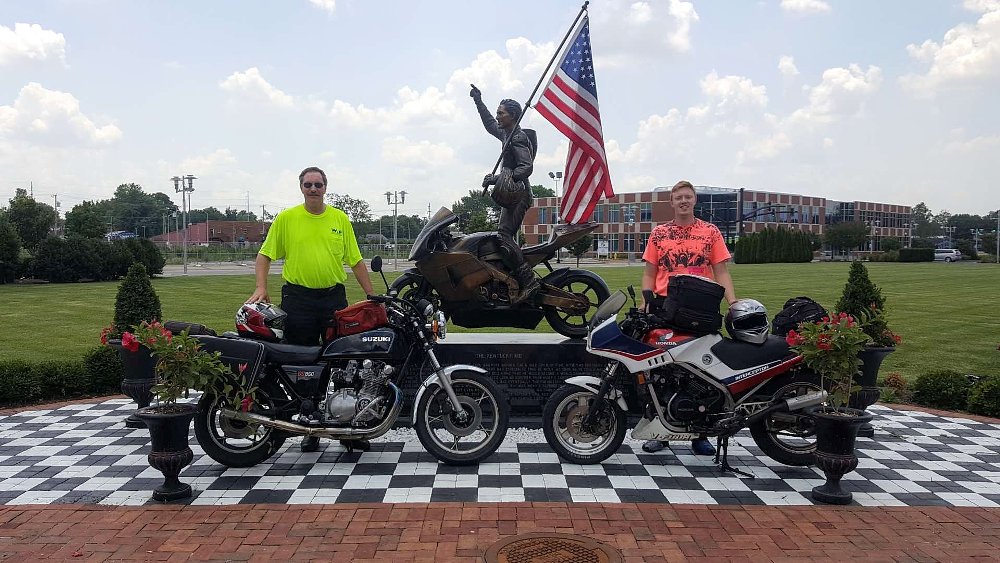
Riding vintage has built connections to people, too
Both academic studies and popular beliefs have noted that dog owners and their pets often share personality traits. I have no peer-reviewed backing, but I believe that to be at least moderately true for motorcycles and their riders, as well. As a general rule, older bikes tend to have older pilots. Being a younger outlier in this data is sometimes a confusing reality, but one I've learned to appreciate.
Firstly (and slightly selfishly), most vintage enthusiasts are excited to see younger folks interested in the same things they are. They can be very eager to share knowledge and stories, and offer help with mechanical trouble, parts sourcing, and any number of the common challenges of classic ownership. I have often underestimated the resource the vintage community can be and now have learned to shamelessly leverage it. Building those connections has been very rewarding and has saved me a bunch of time, headache, and a few dollars, as well.
More importantly to me personally, though, is the chance to connect with my family. My dad has been riding for over 45 years, still maintaining and using motorcycles he's owned for most of that time, and he has kindled that same commitment in my brother and me. We're excited when we see other old and unique bikes on the road and enjoy being able to contribute to the hobby by keeping our old bikes on the road. As my brother and I have developed our own tastes and built our garages, it's given my dad an excuse to reinvest in his original passion, and shown our younger friends some of the best sides of motorcycling.
“Our admiration of the antique is not admiration of the old, but of the natural,” said Ralph Waldo Emerson. Maybe I could've created similar bonds with my family and connections with other riders if I were riding something new from a showroom floor, but the connection wouldn't be the same and a certain charm would be missing.
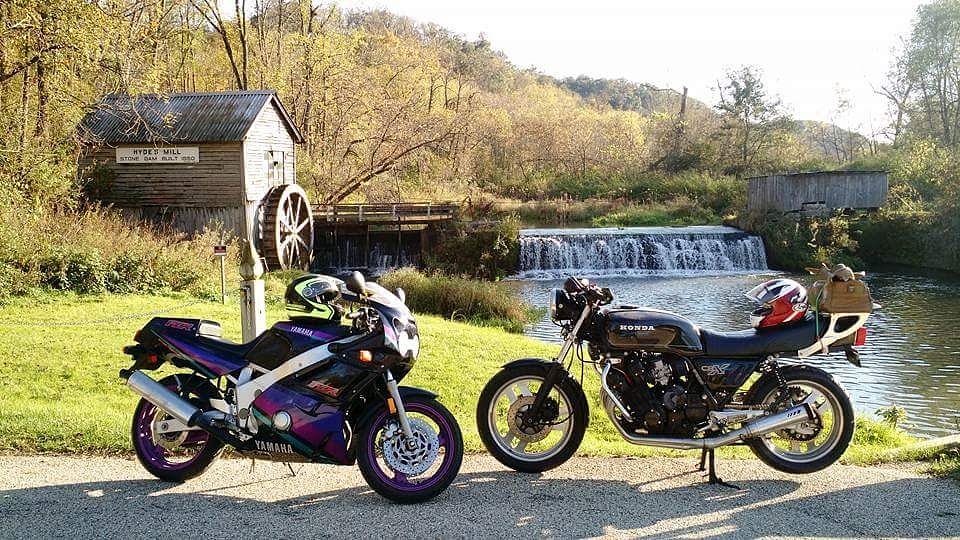
If it doesn't have to be practical, it can be personal
My use case for motorcycles is largely for pleasure; living in Wisconsin along Lake Michigan means that for vintage, road-only motorcycles, the riding season ends most Octobers, and doesn't return until almost May. While I try to accumulate as many miles as possible, riding exists in a category closer to leisure than to pure conveyance. This means that even if my ride leads to an important destination or fuel savings can justify taking the motorcycle on a weekend trip, I'm still getting R&R time in the saddle.
With practicality removed as a sole purpose, vintage bikes embody my personal definition of pure riding. Unreachable by phone, no interrupting GPS voice, no assistance from cruise control, and no visual clutter to obstruct two gauge needles dancing, the experience of a classic bike creates nirvana organically. Have I gotten lost or missed turns because I couldn’t remember a route? Of course. Has my wrist gone numb and gotten sore from holding the throttle during long highway stretches? Certainly. There’s no argument that certain sacrifices in comfort may be involved. However, have I taken in spectacular vistas and impressive scenery without the distraction of a screen? Have hours gone by without stress from career pressures, calendar deadlines, and responses due? Can I now judge speed based solely on exhaust note when a speedometer cable snaps? Those affirmatives are intangibly worth something to me, and may not be as easily attainable without the rugged simplicity of a classic model.
I'm under no illusions that vintage motorcycles are the right niche for every motorcycle enthusiast. The beauty of the motorcycle market is that there are myriad options to fit every use case, budget, and personal taste. Maybe I don't know what I'm missing when it comes to modern features, such as the convenience of fuel injection, or even the feeling of 100-plus horsepower when I twist the throttle; for now, I'm OK with that.
For the right person, who approaches ownership and riding a particular way, getting into vintage ownership can distill motorcycling into some of its best and purest components. If that sounds like you, maybe vintage motorcycles are exactly the corner of the hobby you've been missing.

 Membership
Membership







